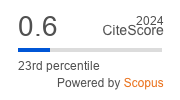Impact of ketoacidosis on long-term outcomes and quality of life in patients with type 1 diabetes mellitus: a retrospective study
https://doi.org/10.29001/2073-8552-2025-40-3-68-75
Abstract
Introduction. There is a rapid increase in the prevalence of type 1 diabetes every year around the world. Often the course of this disease is complicated by the development of diabetic ketoacidosis, which significantly worsens the patient’s long-term prognosis. Aim: To study a cohort of patients with type 1 diabetes mellitus depending on the presence or absence of diabetic ketoacidosis. To compare patient outcomes and quality of life depending on the occurrence of diabetic ketoacidosis in patients with type 1 diabetes mellitus.
Material and Methods. The data of 502 patients hospitalized at the V.V.Vinogradov State Clinical Hospital for the decompensation of type 1 diabetes mellitus for the period from 2022 to 2023 were retrospectively analyzed. Clinical and anamnestic data, the results of instrumental (echocardiography and chest X-ray) examinations were evaluated, the presence or absence of diabetic ketoacidosis was established. In the long-term period, the life status of patients was established by telephone contact with the patient or his relative, and the quality of life was assessed based on the Short Form-36 questionnaire.
Results. Median time of life quality and relapses observation after discharge was 18.5 [12.4; 24.0] months. Depending on the presence or absence of diabetic ketoacidosis, patients were divided into 2 groups: the group of patients with diagnosed diabetic ketoacidosis (DKA+) included 206 patients, the group of patients without signs of ketoacidosis (DKA-) – 296 patients. Clinically, patients in the DKA+ group were younger, males were more common, and disease duration was shorter compared to the DKA– group. Telephone contact was established with 84,5% (n = 174) of patients in the DKA+ group and 82.1% (n = 243) of patients in the DKA– group. The development of a fatal outcomes was noted in 1.9% (n = 4) of cases in the DKA+ group and 1.0% (n = 3) of cases in the DKA– group (p = 0.40). According to the results of the Short Form-36 questionnaire, there were no significant differences in the assessments of the physical and mental components of health between the groups (p > 0.05).
Conclusion. Long-term outcomes in patients with type 1 diabetes mellitus and diabetic ketoacidosis were comparable to those in patients without a history of diabetic ketoacidosis. Previous diabetic ketoacidosis does not have a significant negative impact on the quality of life of patients in the long term in our trial.
Keywords
About the Authors
R. D. AmmarRussian Federation
Rakan D. Ammar - Graduate Student, Department of Internal Medicine with a Course of Cardiology and Functional Diagnostics named after V.S. Moiseyev, Medical Institute of Patrice Lumumba RUDN.
6, Miklukho-Maklaya str., Moscow, 117198
E. A. Tereshchenko
Russian Federation
Ekaterina A. Tereshchenko - Cand. Sci. (Med.), Assistant, Department of Internal Medicine with a Course of Cardiology and Functional Diagnostics named after V.S. Moiseev, Medical Institute of Patrice Lumumba RUDN.
6, Miklukho-Maklaya str., Moscow, 117198
Kh. M. Abdujabborov
Russian Federation
Khurshed M. Abdujabborov - Graduate Student, Department of Internal Diseases with a Course of Cardiology and Functional Diagnostics. V.S.Moiseyev Medical Institute of Patrice Lumumba RUDN.
6, Miklukho-Maklaya str., Moscow, 117198
A. O. Tokteeva
Russian Federation
Anna O. Tokteeva - Fourth-year Student, Medical Institute of Patrice Lumumba RUDN.
6, Miklukho-Maklaya str., Moscow, 117198
L. A. Goreva
Russian Federation
Lyubov A. Goreva - Cand. Sci. (Med.), Associate Professor, Department of Internal Medicine with a Course of Cardiology and Functional Diagnostics V.S. Moiseyev, Medical Institute of Patrice Lumumba RUDN.
6, Miklukho-Maklaya str., Moscow, 117198
References
1. Anciferov M.B., Koteshkova O.M., Klejmenova S.A. Initiation of therapy using an insulin pump in patients with type 1 diabetes mellitus. Farmateka. 2011;216(3):30–37. (In Russ.). EDN: NTWRPN.
2. Eisenbarth G.S. Type I diabetes mellitus. A chronic autoimmune disease. 1986;314(21):1360–1368. https://doi.org/10.1056/NEJM198605223142106.
3. Maksimova E.G., Bondar' I.A. Decompensation of type 1 diabetes and frequency of late vascular complications. Siberian medical review. 2010;64(4):81–85. (In Russ.). EDN: MTBGKL.
4. Goncharova O.V., Zimina N.V., Devishev R.I. The importance of «Diabetes Schools» in the prevention of diabetes mellitus and its complications in children and adults. RMJ. 2012;20(20):1001–1007. (In Russ.). EDN: PMYIHN.
5. Umpierrez G., Korytkowski M. Diabetic emergencies – ketoacidosis, hyperglycaemic hyperosmolar state and hypoglycaemia. Nature Reviews Endocrinology. 2016;12(4):222–232. https://doi.org/10.1038/nrendo.2016.15.
6. Nyenwe E.A., Kitabchi A.E. The evolution of diabetic ketoacidosis: An update of its etiology, pathogenesis and management. Metabolism. 2016;65(4):507–521. https://doi.org/10.1016/j.metabol.2015.12.007.
7. Foster N.C., Beck R.W., Miller K.M., Clements M.A., Rickels M.R., DiMeglio L.A. et al. State of type 1 diabetes management and outcomes from the T1D exchange in 2016–2018. Diabetes technology & therapeutics. 2019;21(2):66–72. https://doi.org/10.1089/dia.2018.0384.
8. Michaelis M., Shochat T., Shimon I., Akirov A. Features and long-term outcomes of patients hospitalized for diabetic ketoacidosis. Diabetes/ metabolism research and reviews. 2021;37(6):e3408. https://doi.org/10.1002/dmrr.3408.
9. Bykov Yu.V. Diabetic ketoacidosis in children and adolescents: from pathophysiology to prevention. Zabajkalʹskij medicinskij vestnik. 2021;2:85–95. (In Russ.). https://doi.org/10.52485/19986173_2021_2_85.
10. Hurtado C.R., Lemor A., Vallejo F., Lopez K., Garcia R., Mathew J. et al. Causes and predictors for 30-day re-admissions in adult patients with diabetic ketoacidosis in the united states: a nationwide analysis, 2010–2014. Endocrine Practice. 2019;25(3):242–253. https://doi.org/10.4158/EP-2018-0457.
11. Gibb F.W., Teoh W.L., Graham J., Lockman K.A. Risk of death following admission to a UK hospital with diabetic ketoacidosis. Diabetologia. 2016;59(10):2082–2087. https://doi.org/10.1007/s00125-016-4034-0.
12. Dedov I.I., Shestakova M.V., Mayorov A.Y., Shamkhalova M.S., Nikonova T.V., Sukhareva O.Y. et al. Diabetes mellitus type 1 in adults. Diabetes mellitus. 2020;23(1S):42–114. (In Russ.). https://doi.org/10.14341/DM12505.
13. Ware Jr. J.E., Sherbourne C.D. The MOS 36-item short-form health survey (SF-36). I. Conceptual framework and item selection. Medical care. 1992;30(6):473–83. PMID: 1593914.
14. Azevedo L.C., Choi H., Simmonds K., Davidow J., Bagshaw S.M. Incidence and long-term outcomes of critically ill adult patients with 17.18.19.20. moderate-to-severe diabetic ketoacidosis: retrospective matched cohort study. Journal of critical care. 2014;29(6):971–977. https://doi.org/10.1016/j.jcrc.2014.07.034.
15. Nunes R.T.L., Mota C.F.M.G.P., Lins P.R.G., Reis F.S., Resende T.C.F., Barberino L.A. et al. Incidence, characteristics and long-term outcomes of patients with diabetic ketoacidosis: a prospective prognosis cohort study in an emergency department. Sao Paulo Medical Journal. 2021;139(1):10–17. https://doi.org/10.1590/1516-3180.2020.0285.R1.21102020.
16. Putula E., Huhtala H., Vanhamäki S., Laatikainen T., Tahkola A., Hannula P. et al. Clinical characteristics and prognoses of patients with diabetic ketoacidosis in Finland. Diabetes Epidemiology and Management. 2023;10:100129. https://doi.org/10.1016/j.deman.2023.100129.
17. Budhram D.R., Bapat P., Bakhsh A., Abuabat M.I., Verhoeff N.J., Mumford D. et al. Prognostic implications of diabetic ketoacidosis in adults on long-term mortality and diabetes-related complications. Canadian Journal of Diabetes. 2024;48(7):462–470.e3. https://doi.org/10.1016/j.jcjd.2024.07.002.
18. Golbets E., Brandstaetter E., Sagy I., Zimhony-Nissim N., Lipnitzki I., Musa H. et al. Predictors and outcomes of recurrent diabetic ketoacidosis in Israeli adults. Diabetes Metab Syndr. 2021;15(5):102276. https://doi.org/10.1016/j.dsx.2021.102276.
19. Alonso J., Ferrer M., Gandek B., Ware Jr. J.E., Aaronson N.K., Mosconi P. et al. Health-related quality of life associated with chronic conditions in eight countries: results from the International Quality of Life Assessment (IQOLA) Project. Qual. Life Res. 2004;13(2):283–298. https://doi.org/10.1023/b:qure.0000018472.46236.05.
20. Randall L., Begovic J., Hudson M., Smiley D., Peng L., Pitre N. et al. Recurrent diabetic ketoacidosis in inner-city minority patients: behavioral, socioeconomic, and psychosocial factors. Diabetes Care. 2011;34(9):1891–1896. https://doi.org/10.2337/dc11-0701.
Review
For citations:
Ammar R.D., Tereshchenko E.A., Abdujabborov Kh.M., Tokteeva A.O., Goreva L.A. Impact of ketoacidosis on long-term outcomes and quality of life in patients with type 1 diabetes mellitus: a retrospective study. Siberian Journal of Clinical and Experimental Medicine. 2025;40(3):68-75. (In Russ.) https://doi.org/10.29001/2073-8552-2025-40-3-68-75





.png)





























